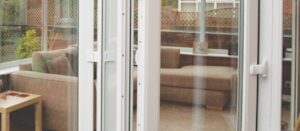Types of UPVC Door Hinges
Jewson provides a range of uPVC door options for your home that are ideal for transforming or upgrading. If your uPVC doors are snagging on the floor or allow in drafts, it is most likely because of hinges that aren't aligned correctly.
To resolve this issue, it is important to recognize the various kinds of hinges used for doors made of upvc. Here are some guidelines on what to look out for.
UPVC
UPVC hinges are used to support doors when they're open and closed. They are available in a large variety of sizes and colors and are made to work with wood and uPVC doors. They can be fitted to both the external and internal doors. However, it's crucial to select the appropriate kind of UPVC door hinge for your door prior to you begin fitting them.
uPVC is an abbreviation for Unplasticized Polyvinyl Chloride. bridgwater door hinge repair 's a material that is used in a wide range of applications, including window sills and frames. It's a long-lasting and low-maintenance material that's often compared to timber and aluminium for its strength, cost-effectiveness and ease of installation.
A properly-fitting hinge will reduce noise, draughts and provide a smoother closing and opening action. They are typically attached to the door jamb as well as the door itself. It is essential to set them up correctly to ensure that they function smoothly.
There are a variety of UPVC door hinges on the market, and it's essential to know which you've got prior to making any adjustments or repairs. If you have a Butt hinge, T hinge or flag hinge, for instance, it's essential to understand the functions each hinge does and how to adjust them if necessary.

The Butt hinge is found on most uPVC doors and is generally fixed to the frame of the door as well as the edge of the door sash. This is the most commonly used style of uPVC hinges for doors. It offers a lot of flexibility and provides a sleek look for your home. This type of hinge is also usually adjustable, allowing you to adjust the direction and location of your door as time passes.
If you're using a T hinge and a T hinge there's an adjustment screw at the bottom of the hinge that can be adjusted. This screw can be used to alter the tension of your hinges by adding or removing the shims. It's best to start by turning the screw for a few turns, then test it and then make further adjustments if needed.
A flag hinge is similar to a T hinge in that it's made with a knuckle plate that has a cutout 'flag-like' at the top, allowing full movement and rotation. It's a simple to adjust uPVC type hinge. Simply loosen the screw on the knuckleplate, and then add the shims or take them off in case you wish to increase the compression.
It is essential to check your uPVC hinges regularly, whether you have a Butt hinge, a T hinge or a flag hinge. It's not common to find them out of alignment or even fall off in time, especially when you frequent the door and shut and open it. You can easily adjust your hinges made of uPVC by following our simple guide, complete with diagrams and videos. Make sure you follow the steps carefully to avoid causing any damage or other issues.
Butt
Hinges, the hardware part that holds your doors and windows in place, come in a variety of sizes, shapes, finishes and materials to fit different applications. The right hinge depends on the location of the project and the look you're trying to achieve. Whether you need an extra sturdy hinge for your barn door, or simply want to add some attractive touches to your cabinet, the options are endless.
Butt hinges, also known as stub hinges, are the most common kind of hinge for doors. They're simple to install and provide sturdy support for frames and doors without adding extra weight. However they're not as sturdy as other hinges and may require more care over time.
A butt hinge is comprised of two plates or leaves, with screw holes on each, that are mortised to the frames' abutting surfaces and doors. The plates are joined by a central pin which is located in the knuckle area of each plate. When the doors are closed, the hinge pin is hidden and only the knuckles are visible.
Butt hinges are able to support more weight since they have a larger knuckle. However, they aren't recommended for doors that are constantly opened and closed, because the constant abrasion could result in premature wear.
Butt hinges are suitable for surfaces that are recessed. Typically they drill a hole into the fixed object to accommodate the hinges, but sometimes, the hinges are attached to the surface with an exclusive fastener.
Butt hinges are available in various finishes and materials that can be used to match any type of exterior or interior installation, whether it's traditional wood or modern metals. They are available in different sizes to fit any door and frame.
Butt hinges come in a variety styles, including strap and ball tip. These styles offer the same functions as the standard butt hinges but with a different look.
While butt hinges are simple to put in and provide solid, durable construction but they are also susceptible to security breaches due to their visibility. The pins that are exposed on butt hinges can be removed and the hinges are able to be manipulated to allow intruders easy access to locked doors. All hardware components must be regularly inspected and lubricated to prevent this. This can reduce friction that leads to squeaky and binding hinges and extends their lifespan.
